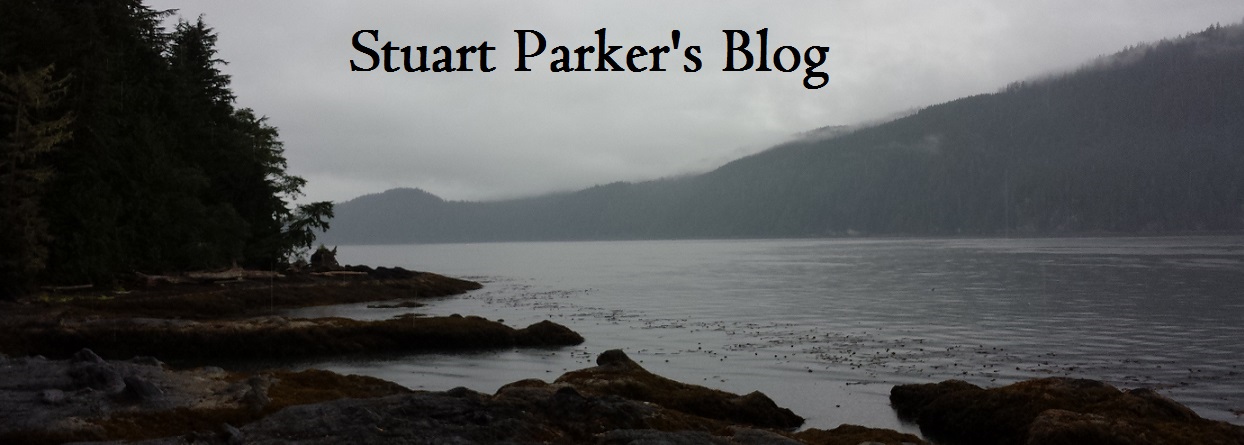Geopolitics Is Not a Schoolyard
For an election that is supposedly about how Canada will respond to Donald Trump’s trade, investment and foreign policy, nobody seems to be actually putting forward a policy framework that makes any sense. Instead, our state-subsidized news media has decided that this is not a policy contest at all but about how will “stand up” and “talk tough,” who can “make Donald Trump behave,” or “put Donald Trump in his place.” “You always must stand up to bullies, no matter what,” apparently serious opinion leaders opine.
These are folks who used to remind us that saying “we need to run the government like a business” was an infantile and immature simplification of the task of governing because the state is bigger, more complex and has a different purpose than a car dealership are now eager to tell us that geopolitics is just like a playground. Just stand your ground and punch the bully because bullies always back down in the face of courage. Because countries are just like elementary school students, even the ones with gigantic nuclear arsenals capable of annihilating all life on earth forever with the press of a button.
While Canada is on an extra-stupid tear as a country right now and we are currently living through the Gaslightenment, it is nevertheless remarkable how little this election contains any actual policy responses to the tariffs. Instead, like spoiled children, Canadians seem mainly focused on making the case that Americans owe us unobstructed access to their steel and aluminum markets, that the president of the US owes Canadians continued prosperity, even if it contributes to America’s massive trade deficit with the rest of the world.
In essence, rather than putting forward a plan to adapt to America’s new trade, industrial, migration and foreign policies our opinion leaders and most of our politicians are instead simply demanding that America change those policies back to the way they were under the Biden Administration. While the Conservative Party has, just in the past couple of days, at least begun to go beyond that, the policies on offer are not impressive.
To understand this failure in both our national discourse and in our public policy imagination, we need to remember how issues like this played out a century ago.
The End of the Progressive Era and the Rise of ISI
A common theme in my writing the past few years has been the shocking parallels between the present and the world of a century ago, reminding me of Karl Marx’s take on the history of the West, that events in our history repeat, “first as tragedy, then as farce.” So, to review, the Progressive Era (1890-1930) was a period when the economy grew rapidly, as did the gap between rich and poor.
Labour costs were depressed and housing prices rose rapidly thanks to uncontrolled mass migration policies and rapidly consolidating private capital in the form of monopolies and oligopolies. Economic growth was maintained through this period through population growth, mass migration and major increases in consumer credit and consumer debt. Curiously, when our societies are run by a small number of tycoons and corporations who control the media and the major industries and reap massive profits leavened by consumer debt, cross dressing and eugenics seem to get awfully popular.
This was not an indefinitely sustainable state of affairs. And so, in the mid-1920s, countries like Canada, the US, Brazil and the new British colonial regime in Palestine enacted sudden and dramatic reductions in immigration. These dramatic reductions were likely essential in forestalling and ultimately preventing the rise of successful fascist parties in the New World, with the exception of the Vargas regime in Brazil, destination of the second-largest number of immigrants after the US.
Following the start of the Great Depression half a decade later, the other cornerstones of Progressive Era economic policy also gradually came to lose their credibility. Growth leavened by private borrowing, free trade, unimpeded investment and what Lenin called “financialization” of developed economies stopped delivering the growth and profits they had in decades previous. Trade declined and trade-dependent economies were required to pivot dramatically in order to avoid entering into a tailspin of debt and underdevelopment.
The countries that handled this era the best and experienced not just less economic decline but, in some cases, increased economic growth and stability were those that switched first and most aggressively from liberal trade and investment policies to what are called “import substitution industrialization” (ISI) policies. Whereas liberal/free trade policies seek to enrich an economy by attracting foreigners to purchase its exports and invest in its businesses, ISI policies seek to concentrate local consumer spending power on local production by diversifying the economy and producing more finished products for local consumers.
Naturally, if one is running a liberal free trade economy, when one’s trading partners switch from free trade to ISI, this deepens the tailspin in a free trading economy by redirecting foreign investment and purchasing power into a neighbour’s domestic economy. In other words, when the world, and, in particular, one’s close trading partner, turns away from free trade and towards ISI, it is important to adopt one’s own ISI policies expeditiously before too much foreign investment and purchasing dries up.
Argentia and Brazil were especially successful in the 1930s because they switched from free trade to ISI faster than other states, acting with an immediacy and a focus that spared their societies the depths of the Great Depression other countries went through. The United States’ pivot was slower, with the Roosevelt government only beginning ISI policies in 1933 and, despite the country’s greater size, it experienced a tougher Great Depression than societies that pivoted more rapidly on trade and investment policy.
Today, we face a similar situation to that of the Interwar Years (i.e. the 1920s and 30s). An era a free trade, open borders, unrestricted investment and economic financialization is ending. Free trade is giving way to protectionism and tariff walls, genuine walls are rising along borders and checkpoints and border enforcement are hardening, pro-foreign investment policies are being replaced by incentives for domestic reinvestment and economies that were financializing and offshoring industry are now reindustrializing.
But Canada is turning out to be a far worse policy laggard than we were in the 1930s.
Canada’s Generation of Living in the Past
Since the beginning of the twenty-first century, Canada has become an increasingly backward jurisdiction relative to global trends. Just as neoconservatism was running out of gas everywhere else, we elected the Stephen Harper government in 2006. By the time we finally gave him a majority in 2011, his was the last neocon regime on earth.
Similarly, just as the rest of the civilized world has been undertaking course corrections on policies like Genderwang and DEI, with these policies being rolled by in Norway, Sweden, Finland, New Zealand, the UK, Italy, the US, Argentina and a host of other developed countries, Canada is only intensifying these policies.
Canada’s commitment to functioning as a nostalgic intellectual and political backwater has real costs at this moment. Instead of reading the geopolitical room and moving quickly and decisively to enact ISI policies, diversifying our economy and redirecting local investors towards our economy, as is taking place in the US, we are mainly focused on explaining why we should not have to adapt and why it is dumb and wrong to bring an end to the era of neoliberal trade, investment and migration policies. Dumb or not, wrong or not, that is what is happening. And Canada has neither the credibility nor the power to arrest, never mind reverse, current global economic trends. We must adapt.
But the problem is that every single one of our national political parties has the same cutting edge 1990s neoliberal trade and investment policies. With the accession of Jean Chretien to the leadership of the Liberal Party in 1990, the party abandoned its longstanding support for ISI and wholly committed to neoliberalism. The NDP followed suit in 2006, following heavy criticism from the media for not being part of Canada’s policy consensus on trade and investment.
When the turn away from neoliberalism began throughout the Global North post-2012, the US saw the popular Bernie Sanders and Donald Trump presidential candidacies explicitly opposing NAFTA and open borders, assailing many aspects of neoliberalism and touting ISI. In 2016, we did not just see Trump take the presidency but the UK withdraw from the neoliberal Maastricht Treaty governing the European Union. And major conflicts over neoliberalism erupted in both Jeremy Corbyn’s Labour Party and Boris Johnson’s Tories, as Nigel Farage’s Reform UK rose in the polls, entering Westminster finally in 2024. These conflicts are playing out in Italy, France and Germany too as the different political systems grapple with the collapse of the neoliberal consensus.
While this era has seen the rise of new parties opposing the neoliberal consensus, like Germany’s AfD and BSW and the UK’s Reform and the resurgence of early 90s anti-neoliberal parties like Australia’s One Nation, Canada’s offering has been especially lame and anemic. Former Conservative cabinet minister Maxime Bernier resigned from the Tory party after losing a close leadership race and, since 2019, has been leader of the People’s Party of Canada, a party that, at first glance, appears to be Canada’s equivalent.
While it is true that Bernier’s party shares the migration, climate and Covid policy skepticism of these other parties, where it differs is that it is actually more fundamentalist in its commitment to neoliberal trade and investment policies, that its main message is that Canada needs to double down on neoliberal orthodoxy and anchor its policies more closely to the economic orthodoxies of the 1990s.
In other words, the reasons we are hearing such an utterly facile and empty debate about which leader will be the toughest and pluckiest when it comes to impotently wagging their finger at Trump or making hyperbolic threats and unhelpful personal denunciations of Trump and his cronies is that Canada has an all-party consensus in favour of continuing to beat the drum of neoliberalism, even as the number of free trading economies in the world continues to shrink precipitously.
Only this weekend did we see the first tentative efforts at a domestic self-reliance reinvestment policy with an announcement from Opposition Leader Pierre Poilievre to that effect. The rest of our political class has no answer to the present state of affairs other than to demand that a time machine be built so we can go back to competing in the global economy that existed between 1989 and 2015 and, frankly, it’s not like Poilievre has an answer that is remotely good or comprehensive enough.
Of course, Canada’s failed journalistic establishment is not helping, by insisting that geopolitics is a schoolyard and that personal pluckiness, seriousness and firmness are perfectly reasonable replacements for sophisticated economic and foreign policy on the world stage. But they are not. And, thanks to an ossified and out of date policy consensus, a media composed mostly of stooges and stenographers for the establishment, Canadians are in danger continuing down an economic path from which the rest of the industrialized world is turning back. And if there is one kind of policy on which you cannot go it alone, it is neoliberal free trade and investment.


